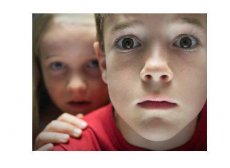Medical expert of the article
New publications
Adolescents are more susceptible to the emotion of fear
Last reviewed: 01.07.2025

All iLive content is medically reviewed or fact checked to ensure as much factual accuracy as possible.
We have strict sourcing guidelines and only link to reputable media sites, academic research institutions and, whenever possible, medically peer reviewed studies. Note that the numbers in parentheses ([1], [2], etc.) are clickable links to these studies.
If you feel that any of our content is inaccurate, out-of-date, or otherwise questionable, please select it and press Ctrl + Enter.

A new study from Weill Cornell Medical College shows that teenagers react differently to fear than adults. Once they get scared, their brains record and remember those emotions and react the same way the next time, even if there's no reason to be scared.

"Our findings may help explain the rise in anxiety disorders in adolescents," says study author Professor Francis Lee. "Especially as 75% of adults who suffer from anxiety disorders are likely to have had them since childhood."
The experts conducted two types of experiments – neurophysiological and psychological. The participants in the experiments were adults, teenagers and children. All categories of subjects were given headphones and asked to watch the movements on the computer screen, on which geometric figures were floating. When one of the figures appeared, a sharp, unpleasant sound was heard. As a result, fear, when this figure appeared, became reflexive. When people saw it, their physiological indicators changed, which were recorded by devices.
In the next stage of the experiment, the subjects again sat in front of the computer screen and viewed a series of geometric figures, but the unpleasant sounds no longer accompanied the objects being shown.
Adults and children after a while realized that there was nothing to be afraid of, but the reaction of teenagers aged 12-17 did not change: they still expected to hear a sharp sound in their headphones and could not shake off the feeling of impending fear. As soon as the corresponding figure floated across the screen, the teenagers broke out in a sweat.
Scientists observed the same reaction in experiments with rats, with the only difference being that they were literally able to look into the rodents’ brains.
Scientists have discovered features that differentiate adult animals from very young cubs. These features are embedded in the prelimbic and infralimbic regions of the animals' prefrontal cortex.
The first zone receives and processes fear emotions, and the second is responsible for their destruction. It turned out that the young and adult rats had a high level of synaptic plasticity, but the adolescent rats had a low level.
The neural circuits in teenagers concentrated in this area take longer to rebuild, so fear does not “let go” of them right away.
This explains why teenagers are much more susceptible to neuroses and anxiety states than adults.
Scientists hope that their discovery will be useful in developing effective methods and drugs that can alleviate teenage depression.

